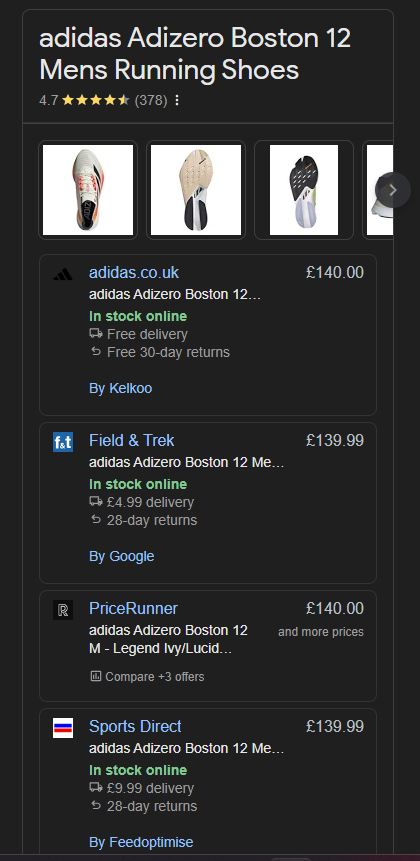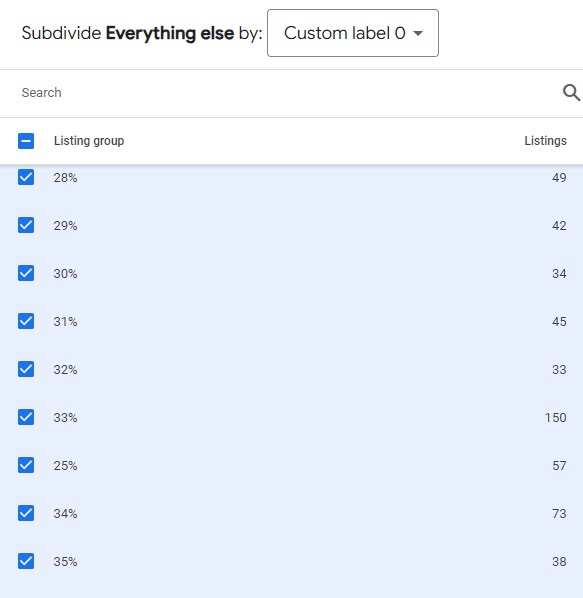Five Product Feed Fixes To Optimise Your Google Shopping Campaign

In the modern landscape of e-commerce, ensuring your products stand out against others is crucial. Millions of shoppers turn to Google Shopping on a daily basis. The ever-increasing competition within the market means the importance of a well optimised product feed is more important than ever. Despite that it’s an area that campaign managers often overlook.
There are many techniques that can be used to optimise your product feed to elevate your listings and maximise performance in Google Shopping. Let’s dig into 5 quick wins you can implement today!
1. Optimising for Mobile
Mobile devices have become the primary method of search. The shift towards mobile makes it important to recognise that mobile-friendliness extends to every facet of a business’s online presence. That includes product feeds. A significant portion of your traffic is going to come from mobile searches. It’s essential to optimise your product feed with this in mind.
The priority when it comes to optimising for mobile is ensuring your product titles are suitable and clear. Screen space on mobile is limited. Lengthy titles can get truncated, hiding important features, potentially leading to lost visibility and lower CTRs. Place essential details at the start of your product titles to ensure they are fully visible on mobile searches.
Consider using condensed phrasing or abbreviations where necessary to show information both concisely and with clarity. By doing this, you can increase the effectiveness of your listings and enhance visibility within the Shopping results, which can lead to more traffic & more conversions for your business.
2. Fill In All Attributes
The listings for your products within the Google Shopping feed are made up of numerous different attributes that allow Google to get a better understanding of your products. These identifiers give Google information that helps to accurately match your products to relevant searches they should return for, as well as being able to compare products like for like with other competitors within the auctions. While there are over 65 different attribute slots that can be filled in, the most important attributes are made up of GTIN, MPN and Brand.
GTINs & MPNs provide a unique identification for each product which allows Google to know exactly what the product is you’ a’re selling. This increases your chances of the products appearing in features like “Similar Items” as well as the “Compare with other stores.” This is good for price competitiveness and provides users with a more personalised shopping experience.

Including brand names in your product listings also helps you to gain trust and credibility. With the increase in dupes and fake products, having the brand name can help users quickly identify products and can positively influence purchasing decisions. This also helps to return your products for users searching specifically for that brand, again increasing the potential click through rate.
Although these are the most important attributes to help unlock features to give you more real estate, higher credibility and enhance click through rate, it is important to fill in as many of the fields as possible. By providing Google with this enhanced level of product metadata, the search engine will be better able to match the product to relevant search queries, improving your visibility and click through rate with qualified traffic.
3. Use Your Search Terms
One of the most insightful features of Google Ads is search reports, which provides the exact search terms users are actively typing in. You can use this data to align your product feed with the language and preferences of your target audience. By delving into your search term reports, you can gain insights into the specific terms and phrases that potential customers use when they are looking for your products. These terms may differ from your standalone product titles. That makes this a huge opportunity to gain extra visibility within the search results.
Once you’ve identified the terms your audience uses, you can begin to incorporate them into the relevant feed attributes, including titles & descriptions. This will not only help to increase visibility but also convey relevance to the user, increasing the likelihood of clicks and conversions.
A good example is Hayes Garden World who are selling a 5ft bench. When looked at objectively, the retailer would assume that this is a relevant title for this product. However, after doing some digging into the search terms, they would find that their users are more interested in how many people the bench seats, rather than the physical size. Adapting your product titles to reflect this will help boost consumer confidence ,as well as enable you to stand out from competitors.

4. Segment With Custom Labels
One of the most overlooked features of the Google Shopping Feed is the opportunity to customise and segment your products further than Google automatically allows, by using Custom Labels. These are manual categories you can fill in with whatever you like. They provide the ability to group together products in ways that aren’t covered by Google’s own attributes, allowing you greater flexibility in subdividing product groups based on what is important to your business.
This could be done in many different ways: by margin, by value, by availability, by bestsellers etc. Once you’ve categorised your products, you can create separate campaigns for each Custom Label. You can tailor the bidding strategy, ad copy and messaging to resonate with the specific audience that each label is trying to target.

By employing this feature within the feed, you can hone in on focus areas. This will save you time on manual segmentation, as well as giving you additional insights and aligning your marketing strategy with your business goals.
5. Feed Rules

Feed rules are a powerful tool to optimise your product feed quickly, without the need to have access to the raw feed. They give you the ability to manipulate and transform data within the feed, unlocking many new opportunities to enhance your product listings.
There are many different ways that you can use feed rules. The main ones enable you to change required data – if there is some missing or incorrectly formatted – add additional data to incorporate more variables, and also clean up the feed by removing redundant or irrelevant information.
Practical ways to use this could include, for example, temporarily appending “Black Friday Sale” to titles in November. You can also use the “Extract” feature to pull specific data out of titles/descriptions to fill in other attributes e.g. Colour or Size.
Feed rules empower you by enabling you to quickly change attributes in the feed to suit your needs. With the click of a button you can enhance your feed’s relevancy, visibility and the performance of your products to ultimately drive more traffic and conversions to your site.
These are just a few of the ways that you can improve your Google Shopping performance through optimising your product feed, giving your campaigns the best potential within the auctions. By leveraging these tools, you are able to start filling in the gaps and giving Google as much information as possible whilst also giving you more flexibility in your marketing efforts.
Anna Simpson is the Head Of Paid Media at Cedarwood Digital – a performance marketing agency based in Manchester.



